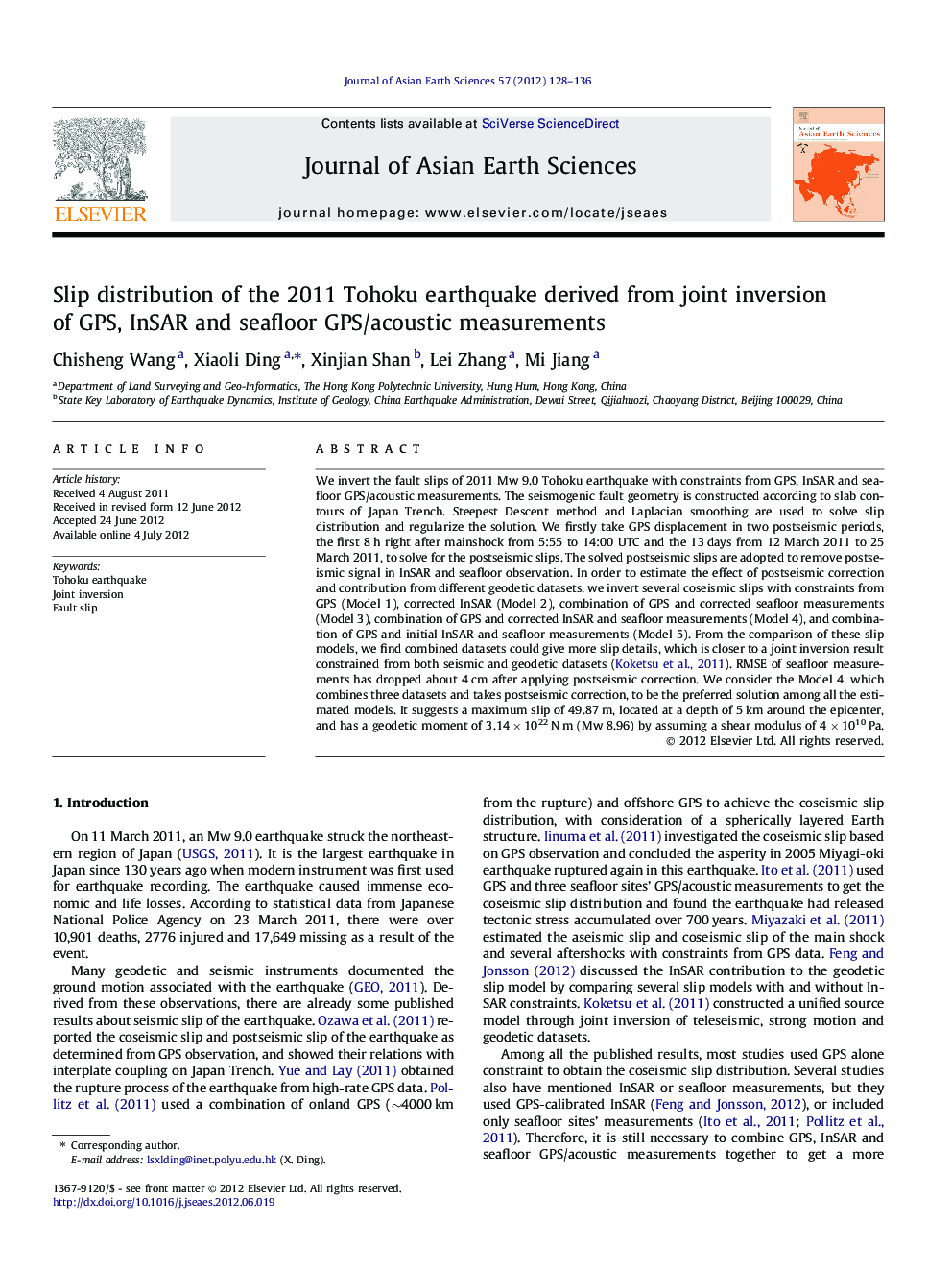| کد مقاله | کد نشریه | سال انتشار | مقاله انگلیسی | نسخه تمام متن |
|---|---|---|---|---|
| 4731428 | 1640408 | 2012 | 9 صفحه PDF | دانلود رایگان |

We invert the fault slips of 2011 Mw 9.0 Tohoku earthquake with constraints from GPS, InSAR and seafloor GPS/acoustic measurements. The seismogenic fault geometry is constructed according to slab contours of Japan Trench. Steepest Descent method and Laplacian smoothing are used to solve slip distribution and regularize the solution. We firstly take GPS displacement in two postseismic periods, the first 8 h right after mainshock from 5:55 to 14:00 UTC and the 13 days from 12 March 2011 to 25 March 2011, to solve for the postseismic slips. The solved postseismic slips are adopted to remove postseismic signal in InSAR and seafloor observation. In order to estimate the effect of postseismic correction and contribution from different geodetic datasets, we invert several coseismic slips with constraints from GPS (Model 1), corrected InSAR (Model 2), combination of GPS and corrected seafloor measurements (Model 3), combination of GPS and corrected InSAR and seafloor measurements (Model 4), and combination of GPS and initial InSAR and seafloor measurements (Model 5). From the comparison of these slip models, we find combined datasets could give more slip details, which is closer to a joint inversion result constrained from both seismic and geodetic datasets (Koketsu et al., 2011). RMSE of seafloor measurements has dropped about 4 cm after applying postseismic correction. We consider the Model 4, which combines three datasets and takes postseismic correction, to be the preferred solution among all the estimated models. It suggests a maximum slip of 49.87 m, located at a depth of 5 km around the epicenter, and has a geodetic moment of 3.14 × 1022 N m (Mw 8.96) by assuming a shear modulus of 4 × 1010 Pa.
► We study source characteristics of 2011 Tohoku earthquake based on three types of observations.
► We derive postseismic fault slips, and correct their influences on coseismic measurements.
► The usefulness of joint use of GPS, InSAR and seafloor GPS/acoustic measurements is demonstrated.
► Inversion based on the three types of observations gives the most detailed information on the slip.
Journal: Journal of Asian Earth Sciences - Volume 57, 5 September 2012, Pages 128–136